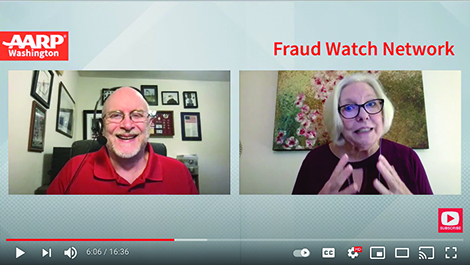Taxes, retirement, and why you need a strategy for both
By Scott Staton
Concerned about how taxes may affect your retirement? If so, you’re part of a growing cadre of Americans, some of whom are beginning to reassess their finances as a result of the COVID-19 pandemic and the uncertainties it brought about.
In a recent Harris poll conducted in conjunction with Nationwide, 62 percent of those surveyed said they think it’s more important now than it was previously for them to develop a strategy to address taxes in retirement.
Actually, it was always important, so it’s good to see that more people are coming to realize they should be proactive in accounting for taxes as they stash away money for what they hope will be their golden years.
We all realize taxes are important. Otherwise we wouldn’t have roads, bridges, a military, and all the other services our contributions to the government help pay for. But that doesn’t mean we enjoy paying taxes – or that we have any interest in paying more than what is necessary. The trick, of course, is making sure you take steps to ensure you pay what you owe – but not a dollar more. That’s not always easy, and lawmakers routinely change the rules and the allowable deductions, making it that much harder. Sometimes changes to the tax code benefit you, sometimes they don’t.
That Harris poll showed that 60 percent of Americans expect their taxes to go up significantly in the next four years. Also, 62 percent say it’s more important to minimize taxes now than to wait until they reach retirement.
With all that in mind, let’s take a look at a few tax issues retirees, pre-retirees, and others need to know about:
Tax-deferred accounts.
When you set aside part of your income to contribute to a traditional IRA or 401(k), you can postpone paying taxes on that money. You also can gain interest on those accounts each year without paying taxes. Of course, with tax-deferred accounts, the key word is “deferred.” Eventually, the tax bill comes due. When you retire and start withdrawing money from those accounts, the IRS will want its share. But what if you decide not to withdraw money from your tax-deferred accounts because you have other income that can pay your bills? Once you reach age 72, you have no choice. That’s when required minimum distributions come into effect. The government requires you to withdraw a certain percentage of your money each year so it can claim those taxes.
Roth conversions.
Let’s say you’re worried about tax-deferred accounts and the tax bill that’s going to come due down the road. One solution that’s become popular in recent years is a Roth conversion. In such a conversion, you move money from your tax-deferred accounts to a Roth IRA. You pay taxes when you make the conversion, so typically you move portions of the money over several years to avoid a big tax hit all at once. But once it’s in the Roth, the money draws interest tax-free and you pay no taxes when you make withdrawals in retirement.
Capital gains.
President Joe Biden has proposed raising the capital gains tax on investors who make over $1 million. Capital gains are profits made from selling investments. Currently, the top capital gains tax rate is 20 percent, but Biden’s plan essentially would eliminate that and tax the capital gains as ordinary income, which could mean a rate as high as 37 percent. As you can imagine, that has some people concerned. What can those investors who would be affected do? One option would be to spread out the sale of their assets over several years to avoid having more than $1 million in gains in a single year.
One of the other findings of the Harris poll was that 41 percent of retirees said they wish they had been better prepared for paying taxes in retirement. In truth, you won’t find many investments that allow you to escape paying taxes completely, and no generic advice can account for everything that might affect your individual situation.
Scott Staton is the founder and president of Staton Financial Group Inc., which specializes in retirement planning and income planning.
